Are you having too much salt? Many of us are, and the consequences for our health can be detrimental.
Today we're getting serious about salt. We're sharing some shocking, salty-facts, including how much salt is too much salt, the effects over-consumption can have on your health, and easy ways to reduce your salt intake every day.
Ready to get healthy? Then let's get started!
Too much salt - the consequences
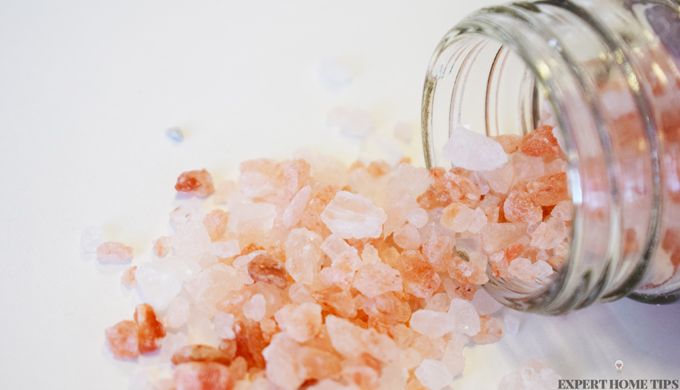
It's easy to overdo it on the salt without even noticing. Although you may be unaware of how much sodium you're adding to your food, your body certainly won't be.
Too much salt can have to severe consequences for your health. Sodium raises blood pressure which can lead to heart disease and stroke.
Recommended daily sodium intake
The NHS recommended daily sodium intake for each age group is as follows:
- Adults: no more than 6g of salt/day (around 1 tsp)
- Children 1-3 years: 2g salt/day
- Children 4-6 years: 3g salt/day
- Children 7-10 years: 5g salt/day
- Children 11 years & over: 6g salt/day
- Babies: <1g salt/day
Be strict with yourself and try and stick to these guidelines as closely as possible - your health will thank you for it!
Tips for reducing your salt intake
If you've been advised to reduce your salt intake, or just want to try and live a healthier lifestyle, we have some tips to help you.
1. Measure salt in your hand
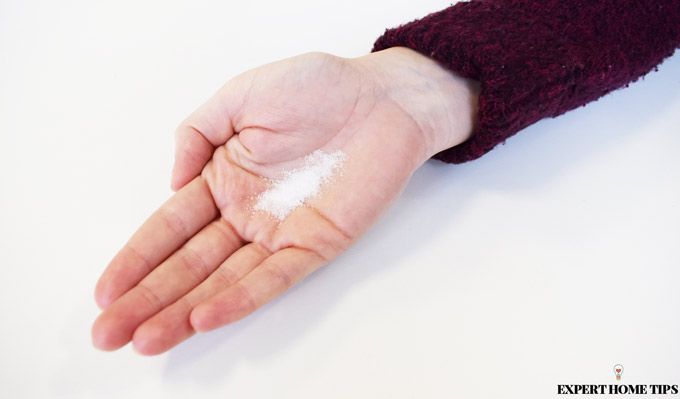
It's easy to add too much salt when you can't visualise it. An easy way to get around this is shaking salt into your hand, rather than directly onto your plate.
This way, you can add a pinch at a time, making it much easier to keep track of and stick to that recommended daily sodium intake.
2. Become self-aware
Salt can be surprisingly addictive, and you may not even notice how much you're putting on your food. In fact, for many of us, shaking salt over our food becomes more of an impulse-reaction than a rational decision - if our food doesn't taste tasty enough, we add more and more, and before we know it we've used up our recommended daily sodium intake in one sitting.
The first (and arguably most important step) towards reducing your salt intake is to become more self-aware.
Remove the salt from the table, and taste your food before adding any of the white stuff. Having to move will make you acknowledge just how much salt you are having/craving. Challenge yourself to add less and less each time.
3. Block salt shaker holes
Now here's a really clever tip.
If you still seem to be uncontrollably grabbing for the salt shaker, try blocking up some of the holes. This will reduce the amount of salt you get during every shake.
You can do this by removing the top of your salt shaker, placing it on a piece of kitchen towel, and painting over a few of the holes using clear nail varnish. Wait to dry before replacing the top.
Don't forget to check out more great uses for nail varnish too!
4. Avoid high-salt foods
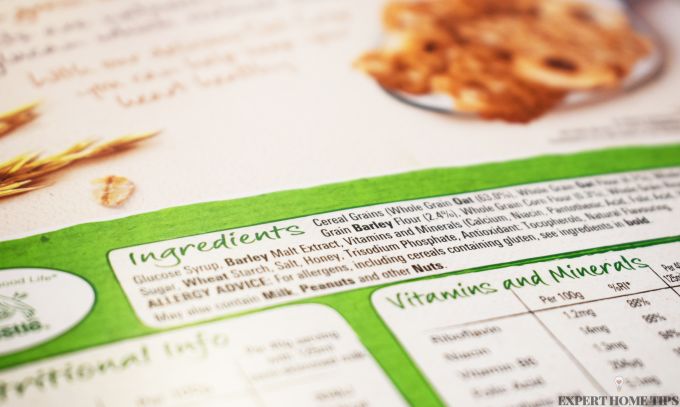
One of the fastest ways to reduce your salt intake is, of course, to stay away from foods that are high in salt.
Some high-salt foods are obvious, but others can be surprising.
See below for a list of foods that are particularly high in salt that you should consider avoiding:
- Stock cubes
- Prawns
- Salami
- Ham
- Olives
- Anchovies
- Bacon
- Salt fish
- Salted nuts
- Soy sauce
- Yeast extract
- Cheese
- Pickles
- Smoked meat & fish
Although not quite as high in sodium, the following foods should also be eaten in moderation:
- Crisps
- Pizza
- Condiments (including ketchup & mayonnaise)
- Cereal (we were surprised too!)
- Ready meals
- Soups
- Crumpets, bagels, ciabatta etc
- Pasta sauces
- Sausages
- Sandwiches
It's also worth bearing in mind that effervescent (dissolvable) tablets can contain up to 1g salt/tablet.
5. Cook from scratch

Looking at the list above, you'll notice that, when it comes to having too much salt, many of the problematic areas lie in pre-prepared foods.
There's an easy way around this.
Cook from scratch! Making your own dishes from start to finish is the easiest way to know exactly what's going in them. As sauces can be extremely high in salt, experimenting with making your own low-sodium sauces could really pay off.
Need inspiration? Head over to BBC goodfood for some fabulous low-salt recipes.
8. Does your restaurant order have too much salt?
It's often tempting to want to 'let your hair down' when dining out. This can, however, have big consequences for your salt intake.
Many restaurants go heavy on the salt to make their food full of flavour. Think pie and gravy; carbonara; chicken stir-fry - all of these classic choices are heavy in salt.
If you're serious about reducing your salt intake, make a conscious effort to order healthier, lighter dishes with less sauce or processed meats. If you're unsure as to how much salt dishes contain, check the restaurant's website for nutritional data beforehand.
7. Eat less meat

Another one of the areas of concern in the list above are meats ( particularly those that have been smoked/are processed).
If you're trying to reduce your salt consumption, not only is it worth restricting yourself to only 100% natural meat such as chicken breast, sirloin, pork loin etc, but also limiting the amount of meat in your diet as a whole.
Fruit and vegetables contain significantly less salt than animal products, so bulking your meals out with these is another easy way to cut down.
It'll also help make your meals healthier, which is definitely a bonus!
8. Pack in the flavour with herbs
If you're having too much salt, but rely on it for flavouring your foods, cutting down can be hard (and often seem like a punishment!)
Whilst your taste buds will adjust to having less salt over time, if you want to reduce your cravings during meal times, try adding more herbs to your meals.
Garlic; basil; thyme; turmeric - all of these spices can add flavour and depth to your dishes. Just be cautious of ready-made spice mixes, as these often already contain hefty helping of salt.
TOP TIP: Check out our amazing uses for salt to get some great ideas that won't contribute towards your
9. Weigh out your salt
Do you even know what your recommended daily sodium intake looks like? If not, it may be a good idea to get your scales out.
Whilst we're not expecting you to get them out at every meal, it will give you a better idea of how much of your recommended daily sodium intake you're using up with added salt in each meal.
10. Quit smoking

People add salt to make their food tastier. One of the things that really takes its toll on your taste buds is smoking.
Enhanced flavour is just one of the many benefits you can expect to reap from stopping the cigarettes. Enhanced flavour = less need for salt = a much healthier, happier you!
Are you on a low-salt diet? If you have any tips, please share them with us in the comments below.
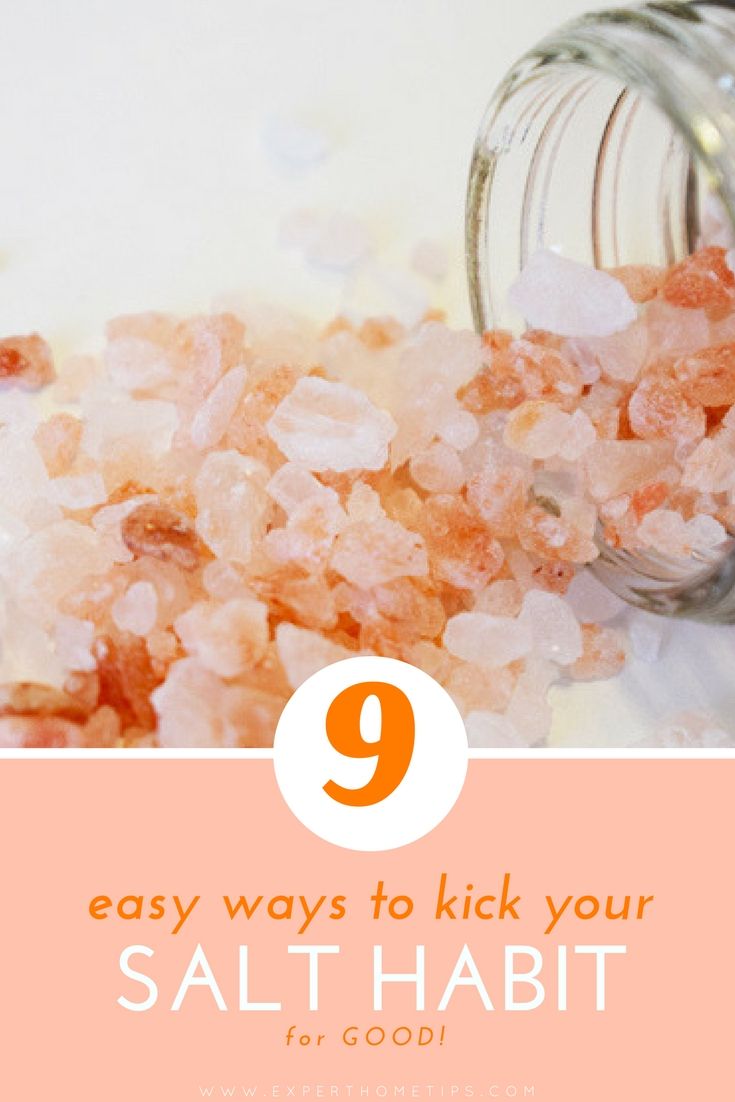
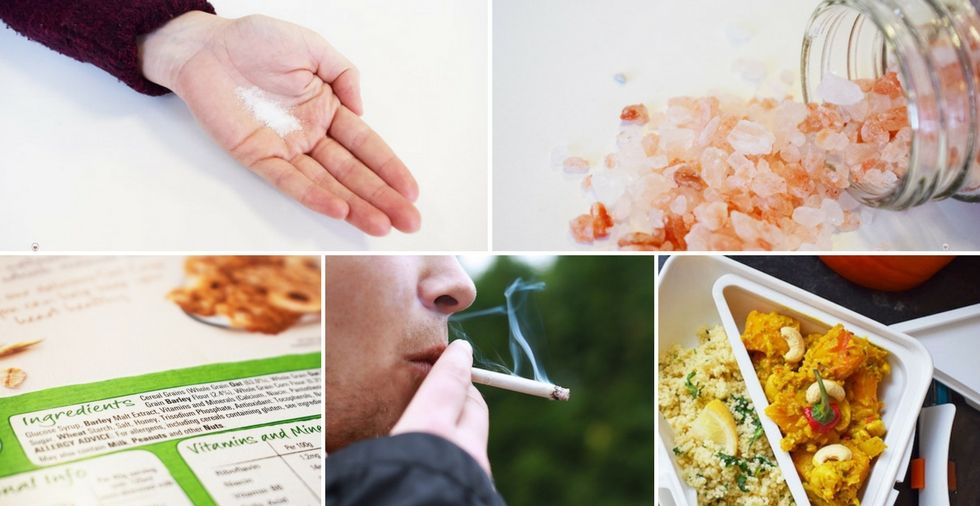
You can reduce your sodium intake by using Himalayan rock salt, sea salt, lo-salt or Solo Salt as these contain potassium chloride as well and some also contain magnesium chloride as well. We need some potassium and sodium in our diets. No other country has set such stringent maximum levels of salt to be consumed each day as the UK has. Not everyone has kidney problems.
Alternative salts like Himalayan rock salt and sea salt contain potassium chloride, and some also include magnesium chloride, which can help lower blood pressure by counteracting the effects of sodium in the diet. However, it's essential to use them in moderation and to consult a healthcare professional before making significant changes to your diet, especially if you have health conditions or take medications.